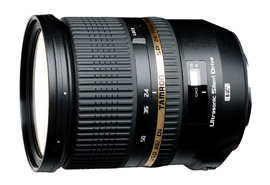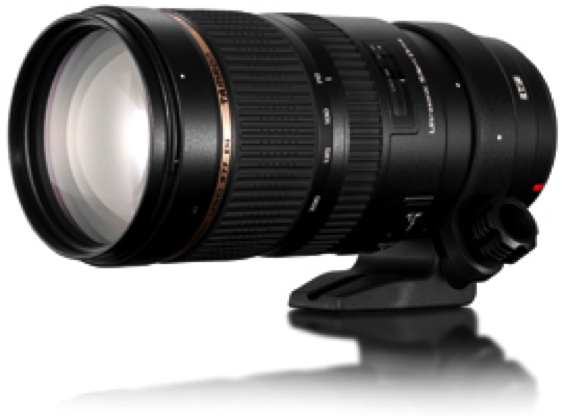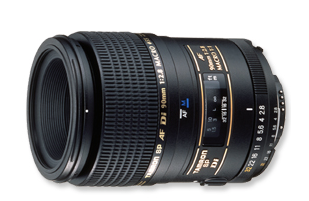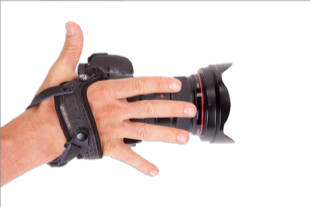We are out at the SKB Case Factory in Orange, California, to see how their iSeries cases are made. This is a busy place with a lot of large machines and moving parts. Shooting in a working factory can seem like a daunting task, but here are 10 tips to make it easier.
1. Scout the location.
You need to scout the location before you shoot. Go out and get an idea of what is going on, ask the person showing you around to explain what the different machines do so you can get an understanding of the process. Look for places you can put the camera to get good angles. Be willing to watch the process once before shooting; this can be done during the scout. Look at it, get an idea, then set your cameras and lights.
2. Make a list of the process.
Even if you don’t understand it, having a list of the steps involved in the process will help make sure you don’t miss anything. Now, you can go step by step throughout on the shoot day. Not every factory has a process but most do so let this be the story behind your shoot.
3. Look for interesting angles.
Get the camera high overhead with a crane or low to the floor to get some interesting angles. Don’t forget POV shots with a GoPro! I have actually started putting a Sony A7s on a super clamp to attach to different locations. I get a lot of the same versatility of a GoPro, but a much higher quality image. Just look for unique angles because no matter what equipment you use, you really cannot get enough shots from interesting places.
4. Move the camera.
A crane shot, a dolly shot, a slider or Glidecam shot – anything where the camera is moving is going to create greater interest and depth than a static, locked-off shot. Even though the thing you are watching is spectacular to watch, a little movement will dress it up that much more and add production value to your video.
5. Use your ambient light for fill, then create highlights with your light source.
We set our camera exposure for the ambient light in the factory. Then, I added some PhotoFlex NorthStar LED lights to create some highlights on the machinery and add depth. This dresses up the image and makes it look a lot nicer.
6. Add color for interest.
In boring, industrial factories, it is a good idea to add some color as a back light or a rim light to add interest. We put some blue gel on our lights to give some cool accents to the machinery and dress up the video.
7. Destroy some product.
You may have to destroy some product to get great dramatic shots so be ready and willing to do that. Cut the bottom out of a case, put the camera in a potato chip bag – make different enclosures for the camera in order to make it a part of the process. They were ready at SKB to do anything we wanted to get the shots, but fortunately this time, we did not need to destroy a case.
8. Bring clean shirts for the workers if needed.
People don’t come prepared, even if you tell them in advance. We had workers there that were wearing shirts that were dirty or had logos that we didn’t want in our video so if you have extras, you can let the workers wear them so they look good and clean. Will from SKB took the shirt off his back and gave it to one of the workers because we needed a shirt with the company logo.
9. Be pleasant and persistent.
Tell the workers exactly what you want them to do, and be pleasant and persistent until you get the shot. Get the talent excited about the process and what you are doing so they want to help you and make it happen.
10. Multiple camera angles.
Shoot two or more camera on a process you are only going to be able to see once. Think cinematically! Set up the cameras with different lenses and at different angles so you can get a wide, medium and close up shot. Two or more camera with different lenses is going to increase the production value of your video and make it easier to cut together.
We had a great day here at SKB and I really enjoyed this process. It is fascinating to see all the machinery at the factory and what it takes to make an iSeries case. I hope these tips will help lay a foundation four you the next time you are out shooting in a working factory. Keep those cameras rollin’ and keep on clickin’.
Jay P Recommends for this Shoot
Video Transcription
Hi, this is Jay P Morgan. Today on the Slanted Lens, we’re here at SKB Case factory. We’re going to show you the things you can do to make shooting in a working factory a lot easier. So let’s get started and see what we can do.
So here are ten tips on shooting video in a working factory. Number one, scout the location. You’ve got to go out ahead of time and see what’s there, see what’s going on, get an idea of the process. See where you can put your camera and look for angles. Really get a good idea of what’s at the location.
Have the person who’s working with you just walk you around the factory and see the different things that are going on there, when there’s breaks on the machine, how they change the machine, things that they do will help you to know when you can shoot and what you can get. Be willing to watch the process once then setup a shoot on the next round. Look at it, get a good idea, then set your lights, then set your cameras, then shoot away.
Jerry at SKB was great. He walked me around, we got to see exactly what the process was. I saw exactly what was going to happen. I was prepared when we came back the day of the shoot.
Number two, make a list of the process you’re going to shoot. Even if you don’t understand it, now you can go to that process and say, “We were at step one, now let’s go to step two.” It gives you a road map so you’ll be able to get footage of each step to be able to accomplish the overall video.
Now, not all industrial videos have a process. Some of them might just be a looking at the different aspects of a factory, but a lot of times there’s some kind of a process. Something that comes in and something that goes out.
The guys at SKB were fabulous because they took and gave me a list. Here’s the exact process for making an SKB case, A, B, C, D. Made it very easy for me to know the process, know what to shoot.
Number three, look for interesting angles. High over head angles which we used our crane to get one when we’re out of SKB which was fabulous. That crane up and high, and looking down, get that low on the floor.
So you’re looking at things from a worm’s eye view. Then of course the POV shots. Go Pro, Go Pro, Go Pro. You cannot get enough shots with a Go Pro. You know, somebody carrying a case with a Go Pro in their chest. So I Go Pro on the conveyor’s belts, it runs along. Seeing people put things up, I mean just look for POV shots. Actually in some ways, I start to use a super clamp or a bowden clamp, put the A7S on that bowden clamp and put that in a lot of the same place you can go to Go Pro but you’re going to need much higher quality image. Look for those interesting angles with Go Pros or with the A7S clamped under the different parts of machinery.
Number four, move the camera. A crane shot, a slider shot, a dolly shot. Anything where the cameras moving is going to create greater, interesting depth in the machinery and the things that are going on with the people. So look for ways to move the cameras, going to make this much more interesting than just a stagnant locked off shot. Even the thing that you’re shooting is really spectacular to watch. A little slider move will dress it up even that much more and make it look fabulous.
Number five, use your ambient light for fill, and then create highlights with your light source. So we’ve got this NorthStar lights or gray LED, we’re going to set the ambient light as our fill light. We’re going to bring our exposure up to where that looks good but then we’re going to put our highlights in with those NorthStar lights. Using your light to make great highlights dresses up the image and makes it look a lot nicer.
Number six, in boring industrial factories it’s a great idea to add a little bit of color as a back light or a rim light to give it a little bit of interest. In our case we put a little bit of blue on our lights, our back lighter rim light gives a nice blue cast in a lot of the shots that we got. Just dress it up a lot. Little bit of something on your lights will help you to separate it and make it look very interesting.
Number seven, you may have to destroy some product to get great dramatic shots. Sometimes you got to cut the bottom out of a case. You got to put the camera in a potato chip bag. You know, be willing to cut and to make different types of enclosure for the cameras to it feels like it’s in the process, part of the process. You know, they were ready at SKB to destroy anything we needed to, to get the shots but we didn’t have to.
We’re able to put our cameras inside a case. It worked out just fine, but we would have done it if we needed to.
Number eight, bring clean shirts. We had workers there that just had terrible shirts and you have to have clean uniforms or clean shirts. You can put people in uniforms so that they look good and they look clean. But sometimes, you’re going to have to need to bring two shirts or things to be able to change up because they got logos on their shirts, because people don’t come prepared with a great shirt even if you tell them they don’t.
You know Will actually took the shirt right off his back. We put it on one of the talents in there because we needed an SKB shirt. So he was ready to give the shirt off his back to make it work.
Number nine, be pleasant and persistent. I need this shot here, I’m going to get it. It’d be fabulous. Can we do this? Let’s get you in there, we’ll be able to see you in there. Do things to get them excited about what you want to do. Help them to share your vision. Have a desire to get a shot just as much as you do. Eventually, you’ll get them on the same page with you.
We’re really blessed because they wanted us there, so they were excited about our process. They wanted us get great angles. They’re wiling to let us do whatever we needed to. So I didn’t have to be that persistent, they were just ready to make it happen.
Number 10, use more than one camera. When you’re going to do a process you only get one shot at it. Think cinematically, we want a broad shot and a establishing type shot, a medium shot, a tight shot. Don’t set all three big cameras up, just on the same lens, on different angles. Two more cameras with different lenses helps give you a different perspective that’s going to help the production value of your video.
So there you have it. Tips on how to shoot in a working factory. We had a great day here at SKB Case. So take those tips, apply it to your shoot. Hopefully to give you some information and help make it easier for you to shoot the next time you’re going to go to a working factory.
I enjoyed this experience a lot. It’s fascinating. All this great big machinery, all the things that went in to make in an SKB Case, so get out there. I hope these tips will help lay a foundation so you can go out there and feel confident shooting in a working factory. So keep those cameras rolling, keep on clicking.
Now that you finished this video and got great lighting instruction, just click this little button. Push right here, it’s not that hard. Just push, click. There you go. You can do it. Yeah.



